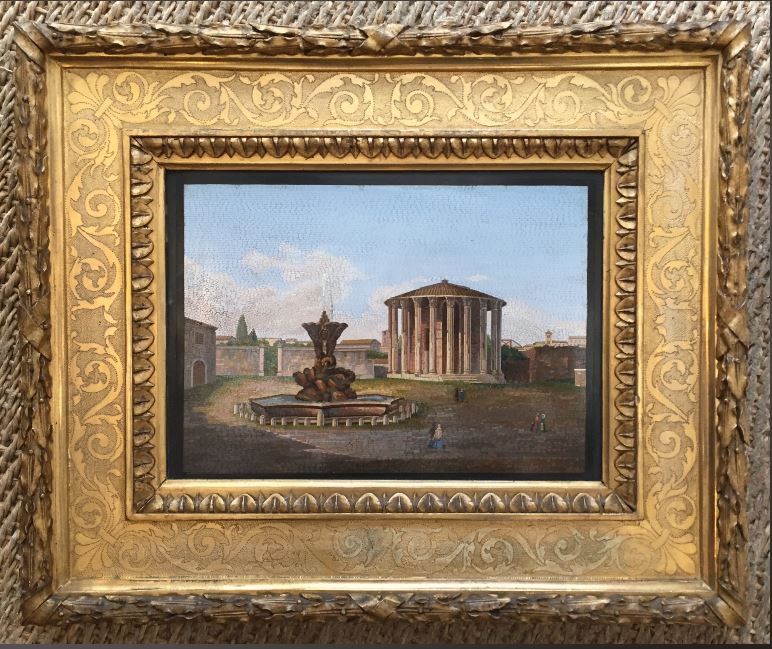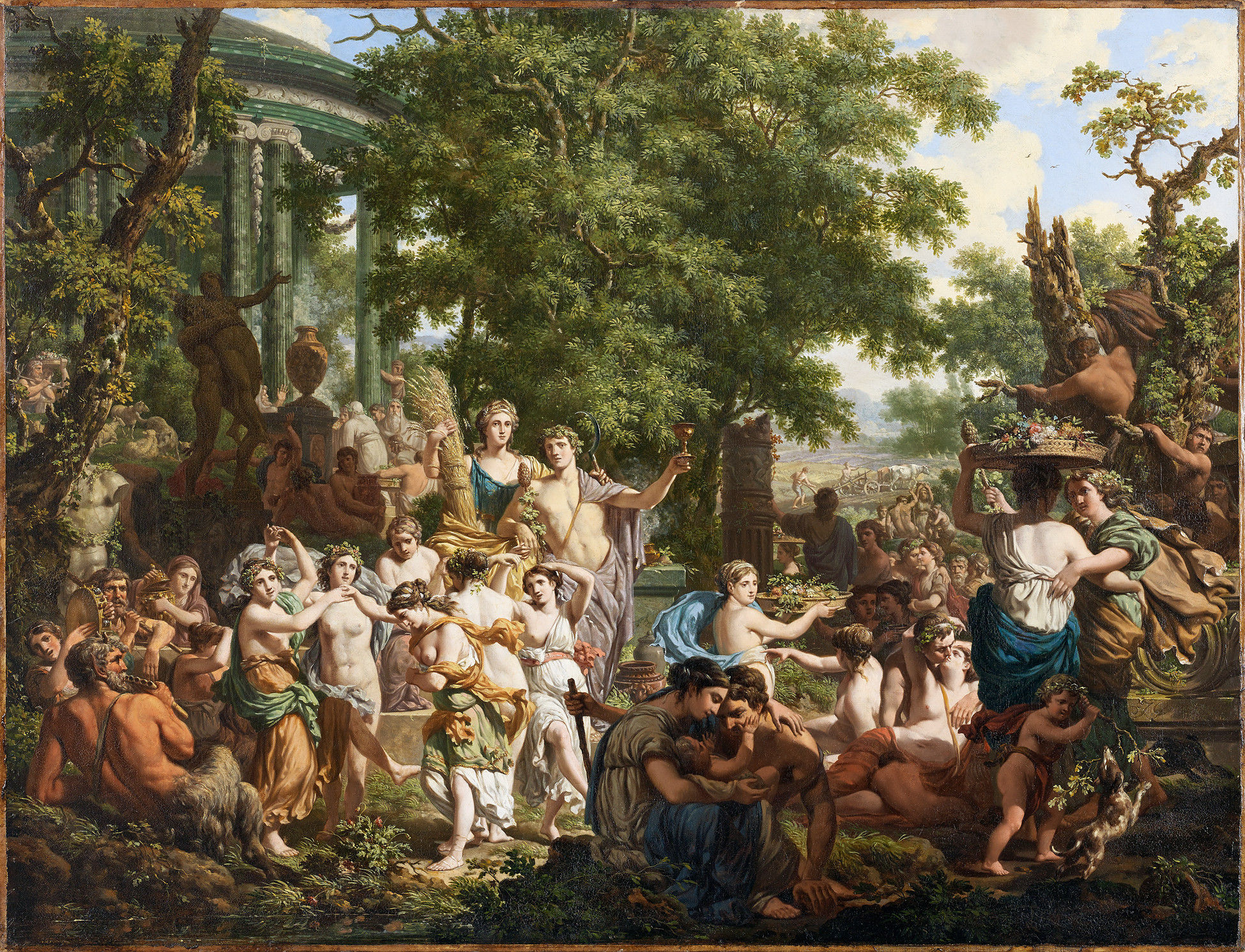Influence of Enlightenment in Art
Paris is without a doubt one of the most artistic cities in the world. Many artists went to Paris to get educated, trained and inspired by this capital and its inhabitants. Already in the 17th and 18th century artists went to this city.
The king Louis XIV of France even founded a special academy, Académie Royale de la Peinture et de Sculpture. This institute- nowadays Académie des Beaux Arts- is still existing as a part of the Institut de France.
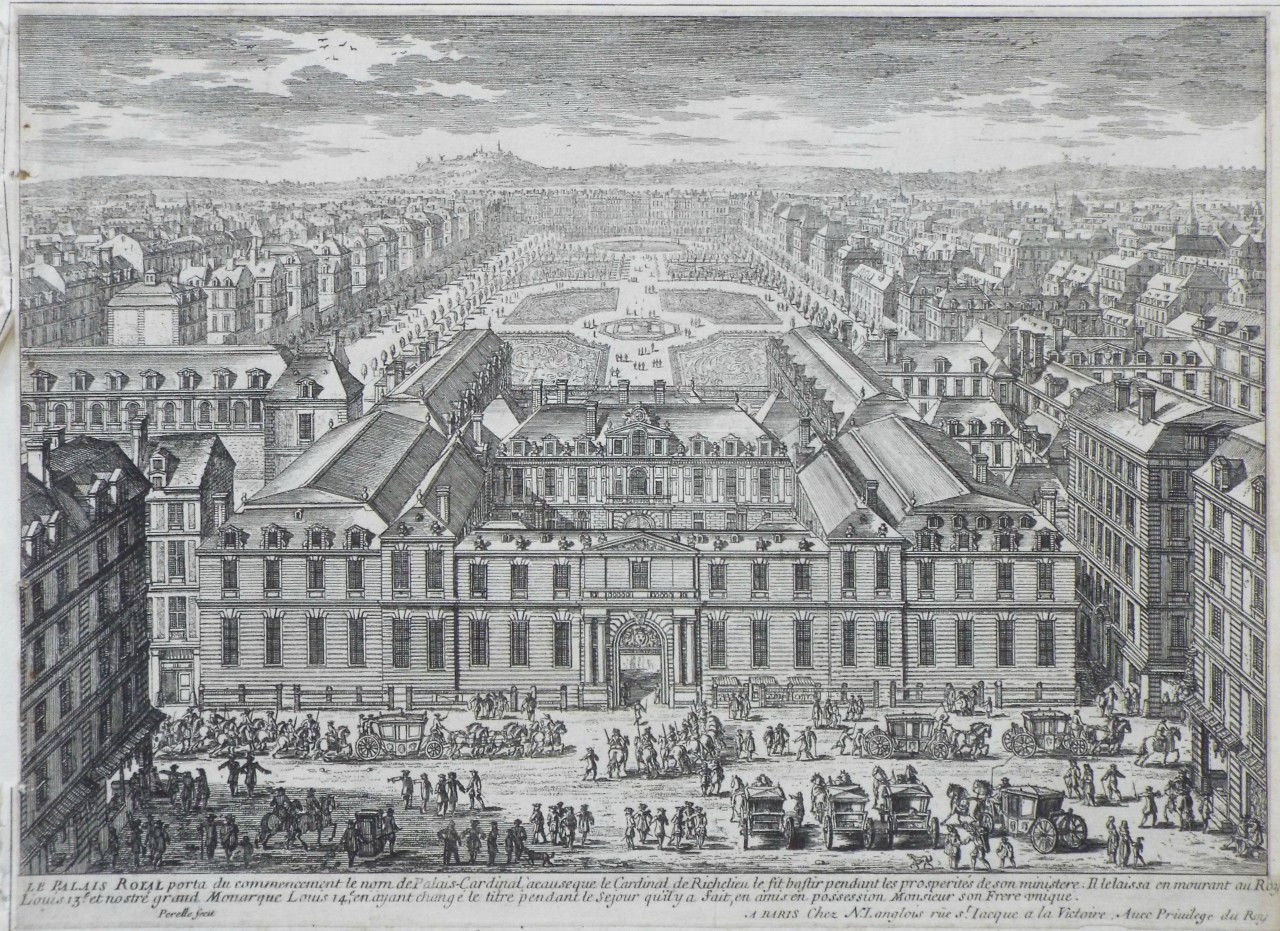
The Palais Royal where the Académie Royale de la Peinture et de Sculpture was located.
Etching by Nicolas Langlois (1640-1703).
Besides the academic artists, lots of artists went by themselves to get inspired by the beauty of Paris. Particularly at the end of the 19th century and early 20th century, numerous artists from professionals to amateurs would paint street scenes like in the artist area of Montmartre. At that time Paris was very fashionable to visit by tourists, who arrived from all over the world. Souvenirs from their visit were bought and taken to their countries. Hence why you can find paintings or other artworks about Paris all over the world.
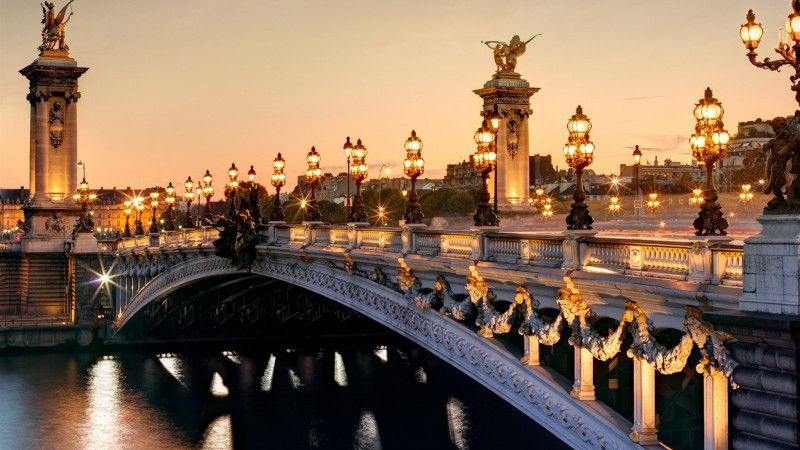
Paris' reputation as the 'City of Lights' is accredited to its position as the intellectual centre during the Age of Enlightment. 'La Ville-Lumière' as Paris is called, was the birthplace of the Age of the Enlightenment or Age of Reason. It was the cradle of new enlighted ideas and eduction and from here it was spread throughout Europe and the rest of the world. Especially the Church and political power of royals were challenged in their authority.
Copper engraving from: Diderot & d'Alembert 'Encyclopédie, ou Dictionnaire raisonné des sciences, des arts et des métiers'.
Available at Robert Schreuder Antiquair
The Encyclopédie
'The Encyclopédie ou Dictionnaire raisonné des sciences, des arts et des métiers, par une Société de Gens de lettres' or in short the Encyclopédie, edited and printed in Paris by Denis Diderot between 1751-1772, was one of the catalysators that spread the new ideas all over the world. This encyclopédia was so special because it had contributions of many enlighted writers, like Jean-Jacques Rousseau, Montesquieu and Voltaire, who spread the thought of the enlightment.
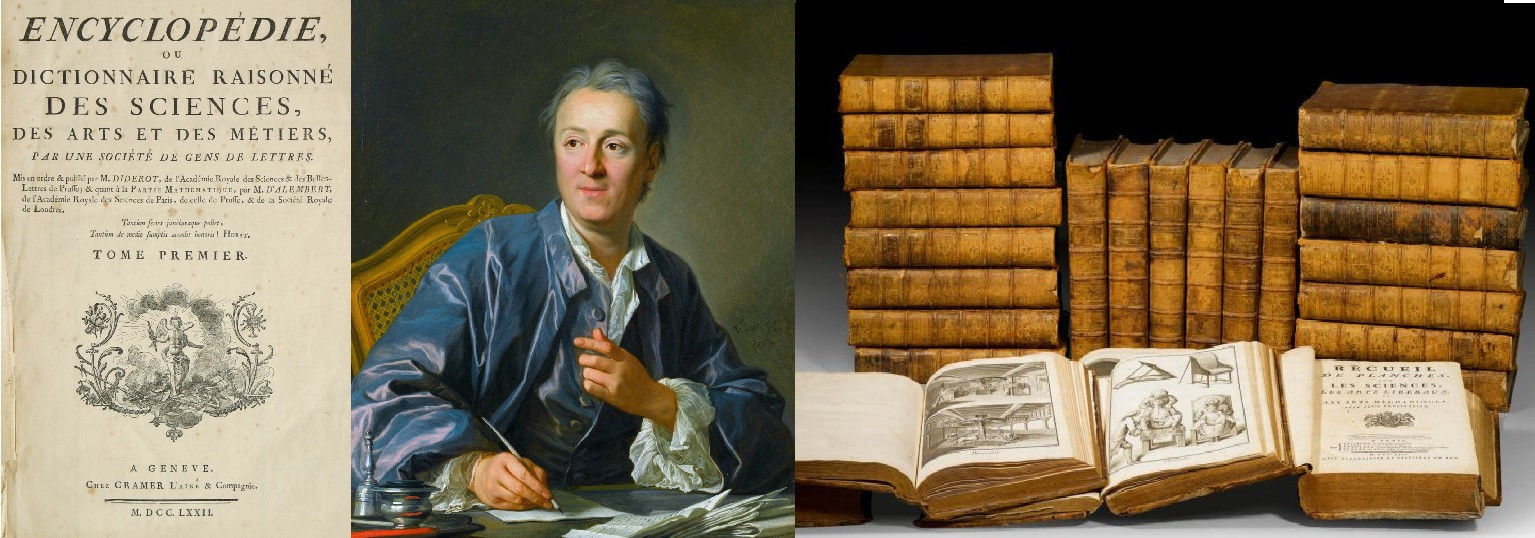
As well it contained new ideas and subjects. It challenged the traditional authority of the Roman Catholic Church and undermined the political establishment by promoting religious tolerance, freedom of thought, and the value of science and industry. Numerous attempts were made to suppress its production, and subscribers were obliged to travel outside of Paris in order to collect the final ten volumes. Although this encyclopedia was even forbidden in France shortly in 1752 and censorship by the French authority made it difficult to continue this encyclopedia, the result of the new ideas of the Encyclopédistes - how the writers were called - was enormous. Even Catherine II of Russia was influenced by this Encyclopedia.

The opening of the Russian Academy of Arts in St-Petersburg in 1757 was initiated by Catherine the Great.
Painting by Valory Jacobi (1834-1902)
Neo-classicism
Influenced by the Enlightenment ideas, in art and architecture a new movement became fashionable: the Neo-Classicism. This new movement broke with the traditional (Catholic and royal) Baroque and Rococo style and had its inspiration in the classical art and culture of the classical antiquity.
Neo-classicism was born in Italy in the 18th century, at the time of the rediscovery of Pompeii (1748), Herculaneum (1709) and the Rosetta Stone (1799), yet its popularity spread all over Europe as a generation of European art students finished their Grand Tour voyage and returned from Italy to their home countries with newly rediscovered Greco-Roman ideals and souvenirs.
A micromosaic souvenir from the Grand Tour in Italy, available at Robert Schreuder Antiquairs
In the visual arts this new movement began around 1760 as a counter movement for the then dominant movements of Rococco and Baroque. The famous engravings serie ‘the Ruins of Palmyra’ by Robert Wood (1717-1771) were the first sytematic publications of ancient buildings. After this period you notice an increase in classical architect drawings and engravings of Greek and Roman temples, buildings and other objects. A good example are the works of the Italian engraver Giovanni Battista Piranesi (1720-1778). His oeuvre - more than 2000 drawings and 1028 engravings - became widely spread and appreciated by his contemporaries.
The lack of human examples from the ancient period gave artists freedom in depicting their impression in paintings. As well it created problems as how to depict a Roman or Greek person. Sculptors like Jean-Antoine Houdon (1741-1828) used examples of Roman sculptures and gained a lot of interest and success in their days.
Celebrating Spring by Jean Grandjean 1776, available at Kollenburg Antiquairs
In architecture as well the new movement inspired by the Greek and Roman period first started in England and France. French architects trained in Rome designed buildings in the ancient tradition. The new buildings were very popular among progressive circles in France and England and were as well adopted by Russia, Germany and Sweden.

The main building where orginally the Imperial Academy of Arts was situated in St Petersburg (Russia). The building is constructed in Neoclassical style.
Goût Grec
Not only the exterior but as well the interior of houses were influenced by the neo classical style. It started around 1740 but by 1760 it became widely spread. And again in Paris a ‘Goût Grec’ or Greek taste was introduced: this style of the Parisian avant-garde upper class was the opposite of the court style or Louis XVI style introduced by the Queen Marie Antoinette. This new style became the predecessor of the French Directoire style and Empire style introduced at the end of the 18th century and the beginning of the 19th century.
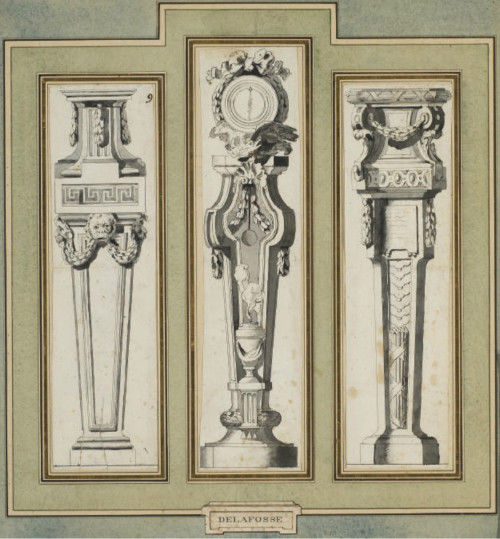
Jean-Charles Delafosse (1734-1789), three designs for tripods in the goût grec taste.
The new interiors in these ‘Goût Grec’ sought to recreate an authentically Roman and genuinely interior vocabulary. It had a short life and was soon replaced by the 'Goût Étrusque' and 'Goût Arabesque' (Etruscian and Arabesque taste). Its style was severe, with chunky classical details, and its first significant appearance was in a set of furniture made for the Parisian financier and patron of arts Ange-Laurent La Live de Jully (Paris, 1725-1779) from designs by the painter and engraver Louis-Joseph Le Lorrain (Paris, 1715-1760). The austere monumentality of these pieces was in stark contrast to the light and elegant shapes of the Rococo which had dominated French art in the first half of the century.
In general you can conclude that the phylosophical and intellectual movement that dominated the 18th century as well influenced new art and architect movements and created the path to a new era and new art movements. At the end of the 18th century, thanks to the new ideas retrieved from the Enlightenment, the start of a new era began.
Please have look at Gallerease for more neo-classical art!
Main painting: Anicet Charles Gabriel Lemonnier (1743-1824), Reading of Voltaire's tragedy of the orphan of China in the salon of Madame Marie Thérèse Rodet Geoffrin



